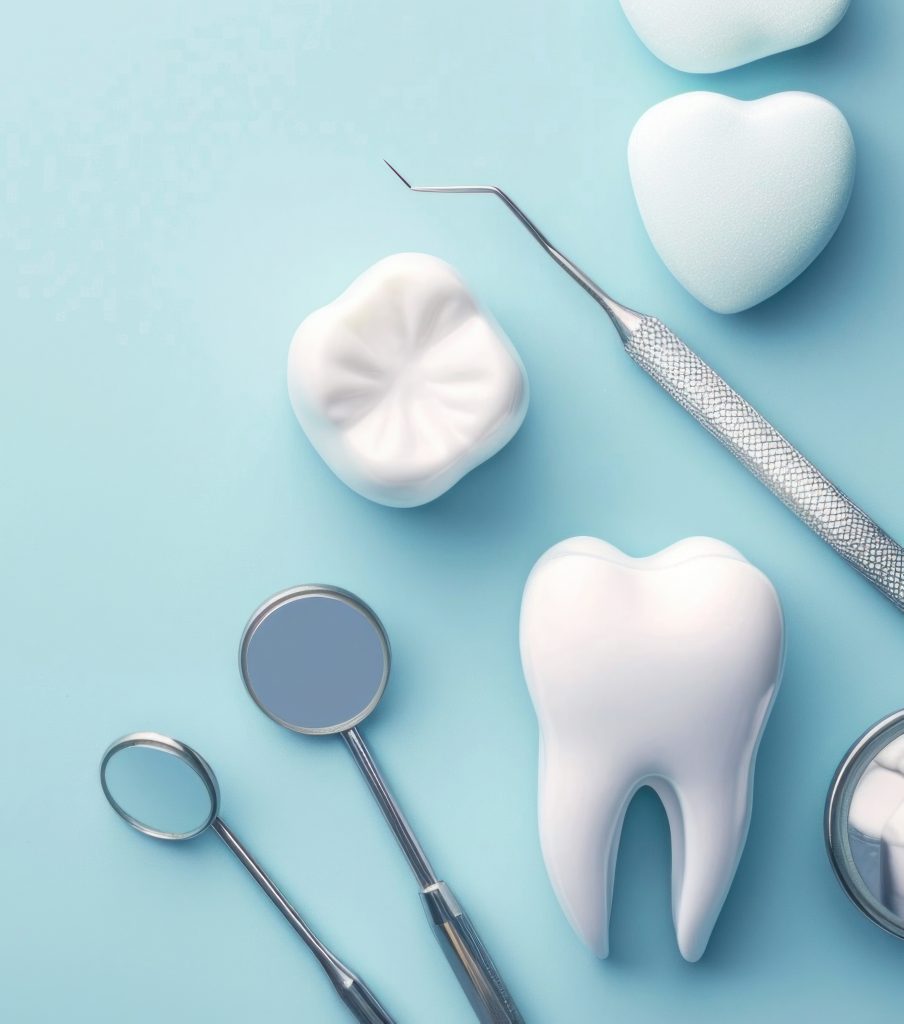What are Dental Crowns?
A crown is a type of dental restoration that entirely covers or ‘caps’ a damaged tooth or sits on top of a dental implant. Crowns can be applied to front teeth and back teeth and are custom made to fit your teeth alignment and fit comfortably in your mouth. Ceramic and porcelain crowns can be matched to the natural colour of your teeth. In some instances, crowns can be fabricated with other materials such as gold and metal alloys.
Crowns are permanently cemented on preexisting tooth structure or can be screwed into an implant. Crowns are considered to be fixed prosthetic implements as they are fixed in place and are not removable.
Crowns are typically used to:
- Improve the strength, shape, appearance or alignment of a damaged/fractured tooth
- Cover a large, failing restoration on a tooth that cannot be replaced in order to protect the tooth from fracturing
- Protect a weakened tooth from fracturing (usually in the case of a root canaled tooth)
- To restore an implant, a crown is screwed into an implant or cemented to an abutment on top of an implant
- Replace a missing tooth by acting as an anchor for a dental bridge (crowns are placed on teeth next to a missing tooth and hold a tooth to replace the space)

Treatment Process
The treatment process for dental crowns requires multiple appointments. During the first appointment, your tooth will be prepared for a crown. Your dentist will administer a local anesthetic in the gum tissue around the tooth to numb the area and prevent discomfort.
Next, your tooth will be isolated to keep the area dry by either a Dry-Shield apparatus which is a rubber shield with a bite block that curves around your teeth and rests in your inner cheek and is attached to a vacuum suction or a rubber dam. For the rubber dam, a clamp is placed on your tooth on the side of treatment and a rubber sheet placed around each individual teeth and anchored by the clamp and a metal frame.
Once isolation is complete, the treatment tooth will be filed along the chewing surface and sides to make space for the width of the crown. The amount that is filed will depend on the state of the tooth and the type of crown being inserted. In some instances, filling material may be used to build up the tooth to support the crown in part due to cavities, a fracture or loosening of previous restoration material on the tooth.
Once the tooth is shaped for the crown, a putty material is used to make an impression of your tooth, as well as the surrounding natural teeth to ensure the crown fits with your natural teeth and will not affect your bite. The impressions will be sent to a dental lab where the crown will be custom-made. You may receive a temporary crown in the interim to protect the prepared tooth.
During the second appointment, your temporary crown will be removed and the permanent/final crown will be cemented in place. Once again, a local anesthetic may be used if required. Your dentist will fit and cement the crown in place and ensure your bite is comfortable by making any necessary adjustments.
Risks & Complications
Crowns are an excellent restorative option for protecting weak or broken teeth. They can improve the appearance of your smile and last many years if cared for properly. However, there are some potential risks and complications with dental crowns.
You may experience discomfort or sensitivity upon receiving a new crown. Discomfort could be caused by the crown being placed too high, resulting in pressure on the crown and surrounding teeth. Also, if the crowned tooth still has a functional nerve within, it may be sensitive to hot or cold temperatures. Contact your dentist if you’re experiencing any type of pain or sensitivity.
There is a possibility you could experience bleeding around the site of the crown placement, as well as infection of the gums or mouth. Seek dental and/or medical treatment if the bleeding fails to cease or if you develop an infection. Crowns can occasionally chip. If the chipping is extensive, your crown may need to be replaced.
Additionally, there is a chance your crown could loosen or fall off. The cement that holds the crown in place could wash out from under the crown, which may result in a loose or dislodged crown or open margin on the crown that can lead to decay of the underlying tooth. Contact your dentist immediately if you notice a loose feeling in your crown or if it falls off completely. You will receive specific instructions for how to care for the tooth and crown before seeing your dentist.
In rare cases, you may experience an allergic reaction to the metals or porcelain used in a crown or to the local anesthetic administered during the treatment process. If an allergic reaction occurs, follow the instructions of your dentist.
Contact Bearspaw Dental today for more information and to learn if a dental crown is the best treatment option for you.

